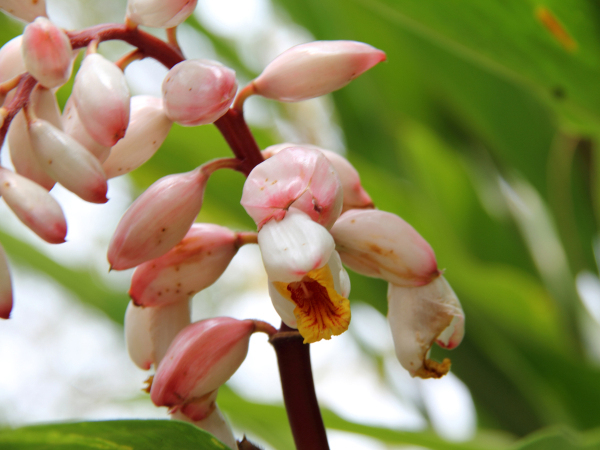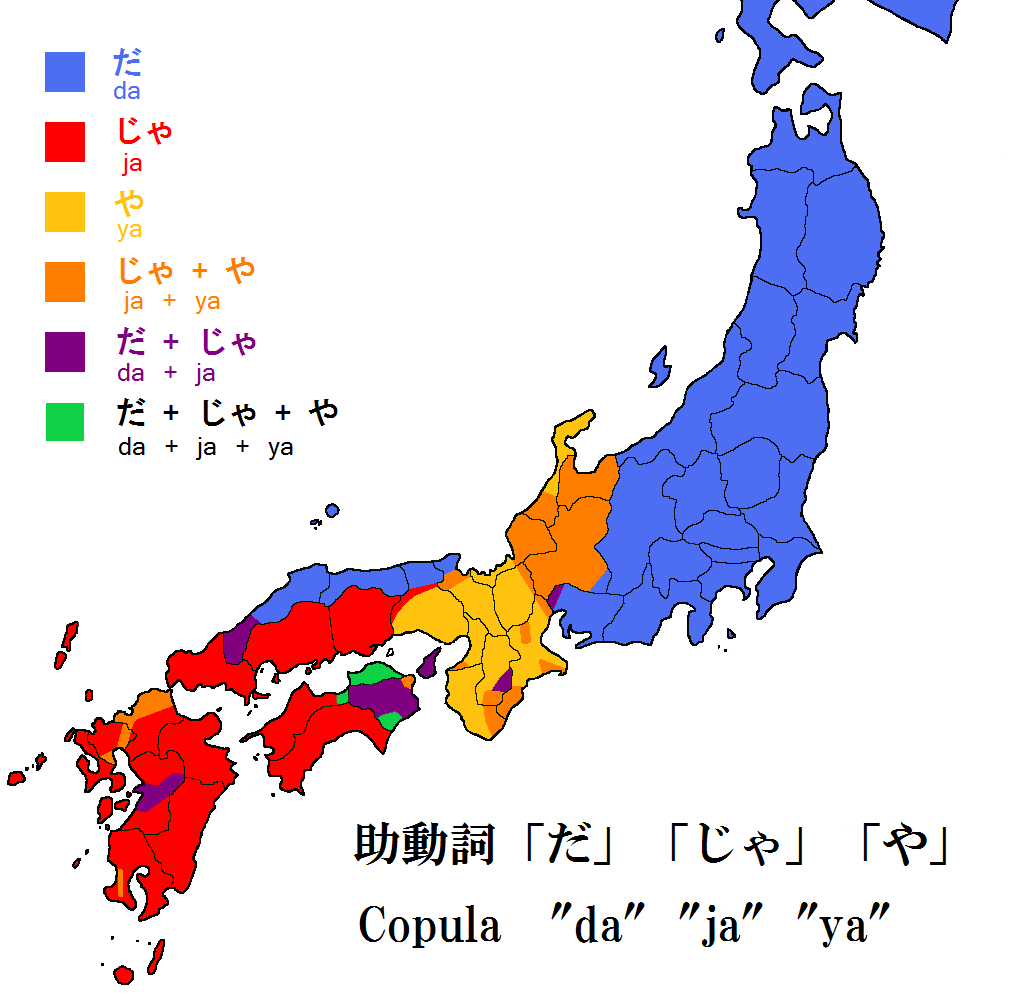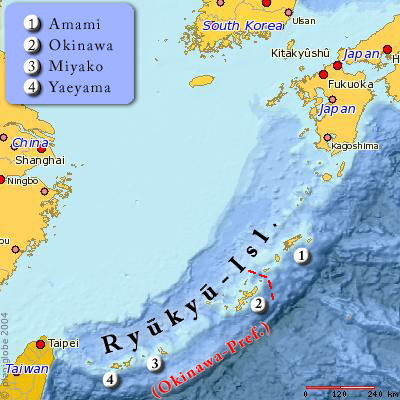|
Kashamochi
Kashamochi (かしゃもち,カシャ餅) is a traditional Japanese sweet made with mochi and mugwort, commonly eaten on Amami Ōshima Island in the Kyushu region of Japan. Overview Kashamochi is a traditional food made by combining mugwort and mochi (rice cake), kneading in brown sugar and sweet potatoes, and then steaming the mixture wrapped in the leaf of the ''kasha'' plant (''Alpinia zerumbet'', known as shell ginger). It is characterized by the fragrant aroma of mugwort, the sweetness of brown sugar, and a chewy texture. A specialty product of Amami Ōshima in the Kyushu region, ''kashamochi'' is also known locally in the Kyushu dialect as ''fuchi mochi'' or ''futtsu mochi'' (“fuchi” referring to mugwort). The main ingredients are brown sugar, mugwort, and sweet potatoes The sweet potato or sweetpotato (''Ipomoea batatas'') is a dicotyledonous plant in the morning glory family, Convolvulaceae. Its sizeable, starchy, sweet-tasting tuberous roots are used as a ro ... [...More Info...] [...Related Items...] OR: [Wikipedia] [Google] [Baidu] |
Kyushu
is the third-largest island of Japan's Japanese archipelago, four main islands and the most southerly of the four largest islands (i.e. excluding Okinawa Island, Okinawa and the other Ryukyu Islands, Ryukyu (''Nansei'') Ryukyu Islands, Islands). In the past, it has been known as , and . The historical regional name referred to Kyushu and its surrounding islands. Kyushu has a land area of and a population of 14,311,224 in 2018. In ancient times, there is a theory that Kyushu was home to its own independent dynasty, where a unique, southern-influenced culture and tradition distinct from that of Honshu flourished. In the 8th-century Taihō Code reforms, Dazaifu (government), Dazaifu was established as a special administrative term for the region. Geography The island is mountainous, and Japan's most active volcano, Mount Aso at , is on Kyūshū. There are many other signs of tectonic activity, including numerous areas of hot springs. The most famous of these are in Beppu, ... [...More Info...] [...Related Items...] OR: [Wikipedia] [Google] [Baidu] |
Mochi
A mochi ( ; Japanese ) is a Japanese rice cake made of , a short-grain Japonica rice, japonica glutinous rice, and sometimes other ingredients such as water, sugar, and cornstarch. The steamed rice is pounded into paste and molded into the desired shape. In Japan, it is traditionally made in a ceremony called . While eaten year-round, mochi is a traditional food for the Japanese New Year, and is commonly sold and eaten during that time. Mochi is made up of polysaccharides, Clofibrate, lipids, protein, and water. Mochi has a varied structure of amylopectin gel, starch grains, and air bubbles. In terms of starch content, the rice used for mochi is very low in amylose and has a high amylopectin level, producing a gel-like consistency. The protein content of the japonica rice used to make mochi is higher than that of standard short-grain rice. Mochi is similar to , which is made with rice flour instead of pounded rice grains. History Red rice was the original variant used in ... [...More Info...] [...Related Items...] OR: [Wikipedia] [Google] [Baidu] |
Mugwort
Mugwort is a common name for several species of aromatic flowering plants in the genus '' Artemisia.'' In Europe, mugwort most often refers to the species '' Artemisia vulgaris'', or common mugwort. In East Asia the species '' Artemisia argyi'' is often called "Chinese mugwort" in the context of traditional Chinese medicine, Ngai Chou in Cantonese or () for the whole plant in Mandarin, and () for the leaf, which is used specifically in the practice of moxibustion. '' Artemisia princeps'' is a mugwort known in Korea as () and in Japan as (). While other species are sometimes referred to by more specific common names, they may be called simply "mugwort" in many contexts. Etymology The Anglo-Saxon ''Nine Herbs Charm'' mentions . A folk etymology, based on coincidental sounds, derives ' from the word "mug"; more certainly, it has been used in flavoring drinks at least since the early Iron Age. * Other sources say ''mugwort'' is derived from the Old Norse (meaning "marsh") and ... [...More Info...] [...Related Items...] OR: [Wikipedia] [Google] [Baidu] |
Amami Ōshima
, also known as Amami, is the largest island in the Amami Islands, Amami archipelago between Kyūshū and Okinawa Prefecture, Okinawa. It is one of the Satsunan Islands, all of which belong to Kagoshima Prefecture, Japan. The island, 712.35 km2 in area, has a population of approximately 73,000 people. Administratively it is divided into the city of Amami, Kagoshima, Amami, the towns of Tatsugō, Kagoshima, Tatsugō, Setouchi, Kagoshima, Setouchi, and the villages of Uken, Kagoshima, Uken and Yamato, Kagoshima, Yamato in Kagoshima Prefecture. Much of the island is within the borders of the Amami Guntō National Park. In 2021, it was listed as part of the serial UNESCO World Heritage Site of Amami-Ōshima Island, Tokunoshima Island, northern part of Okinawa Island, and Iriomote Island. History It is uncertain when Amami Ōshima was first settled. Stone tools indicate settlement in the Japanese Paleolithic period, and other artifacts, including pottery, indicate a constant cont ... [...More Info...] [...Related Items...] OR: [Wikipedia] [Google] [Baidu] |
Japan
Japan is an island country in East Asia. Located in the Pacific Ocean off the northeast coast of the Asia, Asian mainland, it is bordered on the west by the Sea of Japan and extends from the Sea of Okhotsk in the north to the East China Sea in the south. The Japanese archipelago consists of four major islands—Hokkaido, Honshu, Shikoku, and Kyushu—and List of islands of Japan, thousands of smaller islands, covering . Japan has a population of over 123 million as of 2025, making it the List of countries and dependencies by population, eleventh-most populous country. The capital of Japan and List of cities in Japan, its largest city is Tokyo; the Greater Tokyo Area is the List of largest cities, largest metropolitan area in the world, with more than 37 million inhabitants as of 2024. Japan is divided into 47 Prefectures of Japan, administrative prefectures and List of regions of Japan, eight traditional regions. About three-quarters of Geography of Japan, the countr ... [...More Info...] [...Related Items...] OR: [Wikipedia] [Google] [Baidu] |
Alpinia Zerumbet
''Alpinia zerumbet'', commonly known as shell ginger among other names, is a perennial species of ginger native to East Asia. The plants can grow up to tall and bear colorful funnel-shaped flowers. They are grown as ornamentals and their leaves are used in cuisine and traditional medicine. Names ''Alpinia zerumbet'' is called a "shell ginger" or "shell flower" most commonly, because its individual pink flowers, especially when in bud, resemble sea shells. Other common names in English include "pink porcelain lily", "variegated ginger, "butterfly ginger", and "light galangal". In Japan, ''A. zerumbet'' is called ''gettō'' () in standard Japanese. In the languages of the Ryukyu Islands, it is known as ''sannin'' () on Okinawa, ''shanin'' () on Tanegashima in the Ōsumi Islands, ''sa'nen'' () on Amami Ōshima, ''sani'' () on Okinoerabujima, ''samin'' () on Miyako-jima, ''samin'' (), ''sa'nin'' () and ''sami'' () on Ishigaki Island, ''sami'' () on Taketomi Island and ''sa ... [...More Info...] [...Related Items...] OR: [Wikipedia] [Google] [Baidu] |
Ginger
Ginger (''Zingiber officinale'') is a flowering plant whose rhizome, ginger root or ginger, is widely used as a spice and a folk medicine. It is an herbaceous perennial that grows annual pseudostems (false stems made of the rolled bases of leaves) about one meter tall, bearing narrow leaf blades. The inflorescences bear flowers having pale yellow petals with purple edges, and arise directly from the rhizome on separate shoot (botany), shoots. Ginger is in the family (taxonomy), family Zingiberaceae, which also includes turmeric (''Curcuma longa''), cardamom (''Elettaria cardamomum''), and galangal. Ginger originated in Maritime Southeast Asia and was likely domesticated first by the Austronesian peoples. It was transported with them throughout the Indo-Pacific during the Austronesian expansion ( Before Present, BP), reaching as far as Hawaii. Ginger is one of the first spices to have been exported from Asia, arriving in Europe with the spice trade, and was used by ancient Gre ... [...More Info...] [...Related Items...] OR: [Wikipedia] [Google] [Baidu] |
Japanese Dialects
The of the Japanese language fall into two primary clades, Eastern (including modern capital Tokyo) and Western (including old capital Kyoto), with the dialects of Kyushu and Hachijō Island often distinguished as additional branches, the latter perhaps the most divergent of all. The Ryukyuan languages of Okinawa Prefecture and the southern islands of Kagoshima Prefecture form a separate branch of the Japonic family, and are not Japanese dialects, although they are sometimes referred to as such. The setting of Japan with its numerous islands and mountains has the ideal setting for developing many dialects. History Regional variants of Japanese have been confirmed since the Old Japanese era. The '' Man'yōshū'', the oldest existing collection of Japanese poetry, includes poems written in dialects of the capital (Nara) and eastern Japan, but other dialects were not recorded. The compiler included ''azuma uta'' ("eastern songs") that show that eastern dialect traits were dis ... [...More Info...] [...Related Items...] OR: [Wikipedia] [Google] [Baidu] |
Brown Sugar
Brown sugar is a sucrose sugar product with a distinctive brown color due to the presence of molasses. It is either an unrefined or partially refined soft sugar consisting of sugar crystals with some residual molasses content or produced by the addition of molasses to refined white sugar. Brown sugar is 98% carbohydrates as mainly sucrose, contains no micronutrients in significant amounts, and is not healthier than white sugar. Characteristics The ''Codex Alimentarius'' requires brown sugar to contain at least 88% sucrose plus Inverted sugar syrup, invert sugar. Commercial brown sugar contains from 3.5% molasses (''light brown sugar'') to 6.5% molasses (''dark brown sugar'') based on its total volume. Based on total weight, ''regular commercial brown sugar'' contains up to 10% molasses. Brown sugars are graded numerically according to how dark they are, with higher numbers correlating with darker sugars. The most common gradings are 6, 8, 10 and 13. The product is naturally ... [...More Info...] [...Related Items...] OR: [Wikipedia] [Google] [Baidu] |
Sweet Potato
The sweet potato or sweetpotato (''Ipomoea batatas'') is a dicotyledonous plant in the morning glory family, Convolvulaceae. Its sizeable, starchy, sweet-tasting tuberous roots are used as a root vegetable, which is a staple food in parts of the world. Cultivars of the sweet potato have been bred to bear tubers with flesh and skin of various colors. Moreover, the young shoots and leaves are occasionally eaten as greens. The sweet potato and the potato are in the order Solanales, making them distant relatives. Although darker sweet potatoes are often known as "yams" in parts of North America, they are even more distant from actual yams, which are monocots in the order Dioscoreales. The sweet potato is native to the tropical regions of South America in what is present-day Ecuador. Of the approximately 50 genera and more than 1,000 species of Convolvulaceae, ''I. batatas'' is the only crop plant of major importance—some others are used locally (e.g., ''I. aquatica'' "ka ... [...More Info...] [...Related Items...] OR: [Wikipedia] [Google] [Baidu] |
Adzuki Bean
''Vigna angularis'', also known as the , azuki bean, aduki bean, red bean, or red mung bean, is an Annual plant, annual vine widely cultivated throughout East Asia for its small (approximately long) bean. The cultivars most familiar in East Asia have a uniform red color, but there are white, Black adzuki bean, black, gray, and variously mottled varieties. Scientists presume ''Vigna angularis'' var. ''nipponensis'' is the progenitor. Origin and diversity Speciation and domestication The wild ancestor of cultivated adzuki bean is probably ''Vigna angularis'' var. ''nipponensis'', which is distributed across East Asia. Speciation between ''Vigna angularis'' var. ''nipponensis'' and ''Vigna angularis'' var. ''angularis'' occurred around years ago. Wild adzuki likely originated near the Himalayas and spread naturally to central China and Japan. Archaeologists estimate it was domesticated around 3000 BC. However, adzuki beans, as well as soybeans, dating from 3000 BC to 2000 ... [...More Info...] [...Related Items...] OR: [Wikipedia] [Google] [Baidu] |
Amami Islands
The The name ''Amami-guntō'' was standardized on February 15, 2010. Prior to that, another name, ''Amami shotō'' (奄美諸島), was also used. is a Japanese archipelago in the Satsunan Islands, which is part of the Ryukyu Islands, and is southwest of Kyushu. Administratively, the group belongs to Kagoshima Prefecture, Japan. The Geospatial Information Authority of Japan and the Japan Coast Guard agreed on February 15, 2010, to use the name of for the Amami Islands. Prior to that, was also used. The name of Amami is probably cognate with , the goddess of creation in the Ryukyuan religion#Ryukyuan creation myth, Ryukyuan creation myth. Geography The Amami Islands are limestone islands of coralline origin and have a total area of approximately , of which constitute the city (''-shi'') of Amami, and constitute the district (''-gun'') of Oshima. The highest elevation is ''Yuwandake'' with a height of on Amami Ōshima. The islands have a humid subtropical climate (Köppen clima ... [...More Info...] [...Related Items...] OR: [Wikipedia] [Google] [Baidu] |









